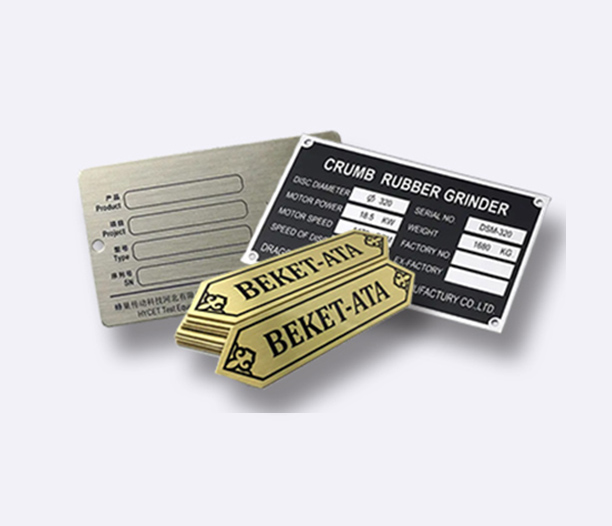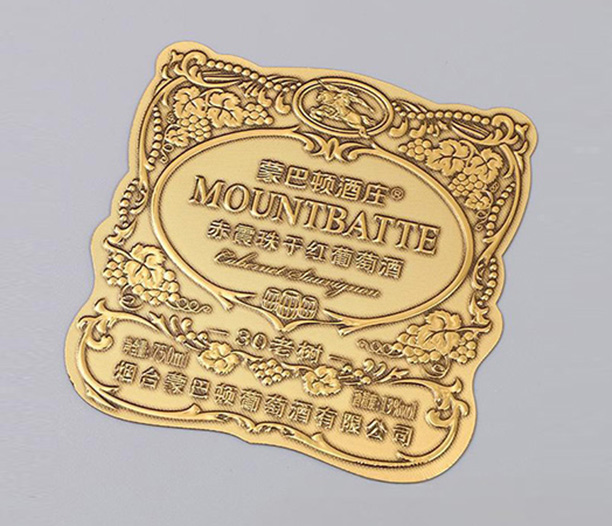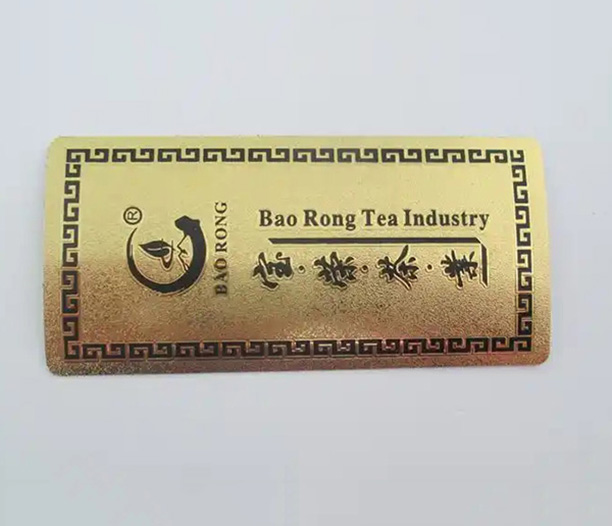In the fiercely competitive world of jewelry, differentiation is everything. Beyond exquisite design and quality craftsmanship, the subtle details often seal the deal for discerning customers. Enter custom metal tags for jewelry – small, powerful identifiers that transcend mere labeling. These miniature masterpieces are potent tools for branding, personalization, and conveying value. Far more than just a functional necessity, custom metal tags for jewelry are an investment in your brand's identity, perceived quality, and customer connection. This comprehensive guide explores seven compelling reasons why they are indispensable and provides essential insights into selecting the perfect tags for your creations.
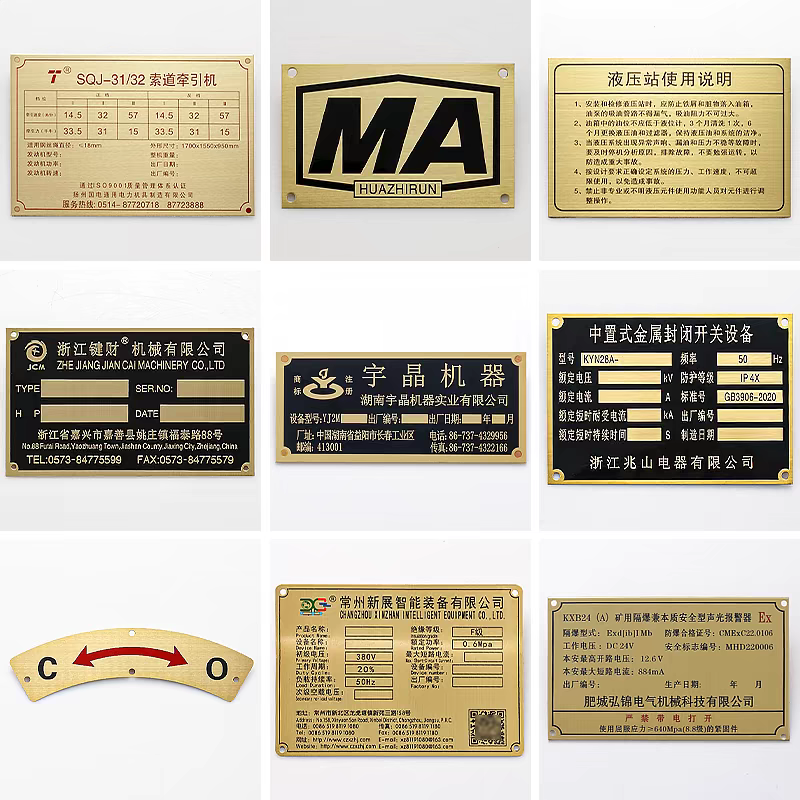
1. Elevating Brand Identity & Recognition: Your Signature in Metal
Your brand is more than a logo; it's an experience. Custom metal tags for jewelry serve as a constant, tangible reminder of your brand identity, worn proudly by your customers.
Instant Brand Recall: A unique tag design – whether featuring your logo, a specific shape, a signature font, or a distinctive texture – becomes instantly recognizable. Every time the wearer or an admirer sees the tag, your brand is reinforced. Think Tiffany & Co.'s iconic engraved tags or Cartier's distinctive script – these tags are the brand.
Conveying Brand Values: The choice of metal, the quality of engraving, and the overall aesthetic of your custom metal tags for jewelry speak volumes about your brand's values. A polished sterling silver tag conveys luxury and heritage, while a hand-stamped brass tag might suggest artisanal, rustic charm. The tag becomes a silent ambassador for your brand ethos.
Professionalism & Legitimacy: In a market flooded with mass-produced pieces, a professionally crafted custom tag signals legitimacy and attention to detail. It tells customers they are investing in a considered piece from a dedicated brand, not a generic commodity. It elevates the perceived value of the entire piece.
Building Trust: Consistent use of high-quality custom metal tags for jewelry across your collection builds trust. Customers associate the tag with your brand's quality promise. Seeing the familiar tag assures them of authenticity, especially important for online purchases or gifts.
2. Unlocking Personalization: Beyond the Monogram
While monograms are classic, custom metal tags for jewelry offer a vast canvas for meaningful personalization that resonates deeply with customers.
Names & Initials: The timeless choice. Engraved names or initials transform a beautiful piece into a deeply personal treasure, perfect for gifts or self-purchases celebrating identity. Custom metal tags for jewelry make this personalization durable and elegant.
Meaningful Dates: Commemorate weddings, anniversaries, births, graduations, or significant life achievements with a discreetly engraved date on the tag. This adds profound sentimental value.
Special Messages & Quotes: Short, impactful messages ("Love You," "Strength," "Follow Your Dreams"), coordinates of a special place, or even tiny inspirational quotes can be laser engraved onto tags. This creates a unique talisman for the wearer.
Symbols & Icons: Incorporate meaningful symbols – hearts, stars, infinity signs, animals, religious icons, or custom-designed glyphs – alongside or instead of text. These visual elements can hold powerful personal significance.
Handwriting & Signatures: Some suppliers offer the technology to laser engrave actual handwriting or signatures onto custom metal tags for jewelry, adding an incredibly intimate and unique touch.
Enhanced Giftability: Personalized jewelry is the ultimate gift. Custom metal tags for jewelry make the gifting process seamless and the gift itself unforgettable, showcasing the thoughtfulness behind it.
3. Exploring Material Options: Finding the Perfect Metal Match
The choice of metal for your custom metal tags for jewelry significantly impacts aesthetics, durability, cost, and even skin sensitivity. Understanding the options is crucial.
Sterling Silver (925): The classic choice for fine jewelry. Offers a bright, lustrous white finish, excellent durability (when alloyed with copper), good value, and hypoallergenic properties for most wearers. Prone to tarnishing but easily polished. Ideal for elegant, traditional, and modern designs.
Gold (Yellow, Rose, White - 10K, 14K, 18K): The epitome of luxury. Offers unparalleled warmth (yellow), romance (rose), or cool elegance (white gold, usually rhodium plated). Highly durable, especially in lower karats (10K, 14K). Hypoallergenic. Significantly higher cost than silver. Perfect for high-end pieces and brands emphasizing luxury. Custom metal tags for jewelry in gold become heirloom elements.
Brass: A warm, gold-toned alloy of copper and zinc. Highly malleable, making it excellent for intricate stamping and forming. Develops a beautiful patina over time, loved for its vintage appeal. Very affordable. Can cause green discoloration on skin for some (a clear lacquer coating can prevent this). Ideal for bohemian, rustic, artisanal, and vintage-inspired jewelry.
Copper: Known for its rich, reddish-brown hue and excellent conductivity. Develops a distinctive green patina (verdigris) over time, though this can be slowed with lacquer. Very malleable and affordable. Can cause skin discoloration (similar to brass) and some people have copper sensitivities. Popular for earthy, natural, and artisan styles.
Aluminum: Lightweight, strong, and highly corrosion-resistant. Offers a modern, cool gray metallic look. Can be anodized to create vibrant, durable colors (blacks, blues, reds, golds, etc.) without plating. Very affordable. Hypoallergenic. Ideal for contemporary, fashion-forward, or sporty jewelry lines and as colorful custom metal tags for jewelry.
Stainless Steel: Exceptionally strong, durable, and highly resistant to tarnish and corrosion. Has a cool, modern gray sheen. Hypoallergenic and very affordable. Less malleable than other options, often limiting it to simpler shapes and laser engraving. Perfect for masculine jewelry, industrial styles, medical ID, and pieces requiring maximum durability.
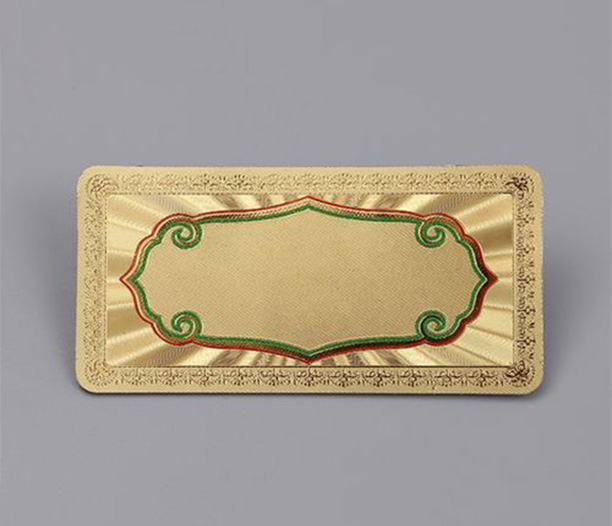
4. Mastering Attachment Methods: Securing Your Brand Statement
How you attach the custom metal tags for jewelry is as important as the tag itself. The method must be secure, aesthetically pleasing, and appropriate for the jewelry piece.
Jump Rings (Soldered or Unsoldered): The most common method. A small metal ring passes through a hole in the tag and attaches to a link on a chain, bracelet, or the jewelry finding itself. Soldered jump rings are permanently closed, offering maximum security – essential for valuable pieces. Unsoldered rings are easier for makers to open/close but less secure.
Lobster Claw or Spring Ring Clasps: Often used to attach tags to bracelets or anklets directly. Provides a secure closure and allows the tag to dangle freely. Ensure the clasp size is proportionate to the tag.
Direct Soldering: For a seamless, permanent, and ultra-secure attachment, the tag can be directly soldered onto a charm, pendant base, bangle, or ring band. This creates a clean, integrated look, ideal for high-end pieces where the tag is the focal point. Requires skilled craftsmanship.
Incorporation into Findings: Tags can be designed as part of a larger finding, like a pendant bail or a connector link. This creates a cohesive design element. Custom metal tags for jewelry can be integrated into the structure of earring posts or cufflinks.
Riveting: A mechanical cold-connection method using a small metal pin (rivet) hammered or pressed to secure the tag to another metal component (like leather or another metal piece). Creates a decorative, industrial, or artisanal look. Very secure.
Folding/Tabbing: Some flat tags have small tabs that can be folded over a chain link or bar, securing them in place without needing a separate jump ring. Efficient for specific designs.
Considerations: Always prioritize security, especially for valuable items or tags on bracelets/anklets prone to catching. Ensure the attachment method doesn't snag clothing or hair. The method should complement the overall design aesthetic.
5. Navigating the Design & Production Process: From Idea to Reality
Creating your perfect custom metal tags for jewelry involves a collaborative process with your supplier. Understanding the steps ensures a smooth experience and optimal results.
Concept & Requirements: Start with a clear vision. What is the primary purpose (branding, personalization)? What size and shape? What metal? What attachment method? What information needs to be on the tag (logo, text, symbols)? Gather any logos or fonts in vector format (AI, EPS, SVG).
Supplier Selection: Research manufacturers specializing in custom metal tags for jewelry. Look for experience, positive reviews, material options, minimum order quantities (MOQs), turnaround times, and samples of their work. Communication responsiveness is key. (See section 7).
Artwork Submission & Proofing: Provide your supplier with clear, high-resolution vector artwork. They will typically create a digital proof showing the exact layout, size, and font. Scrutinize this proof meticulously – check spelling, spacing, alignment, and size. This is your last chance to catch errors before production. Approve only when perfect.
Choosing the Technique:
Laser Engraving: Uses a laser beam to vaporize metal, creating precise, clean, and deep marks. Ideal for intricate logos, fine text, and complex designs. Works best on harder metals (stainless steel, titanium) and precious metals. Offers excellent durability.
Stamping: Uses a hardened steel die struck onto the metal tag with force, creating an impression. Offers a classic, handcrafted, often slightly debossed look. Best for simpler text, logos, and shapes. Depth and clarity depend on the metal's malleability (brass, copper, sterling silver are excellent). Highly durable.
Etching: Chemical or electrochemical process that removes metal to create a design. Can produce very detailed results but often creates shallower marks than engraving or stamping. Less common for small jewelry tags than the other two.
Deep Stamping/Embossing: Creates a raised 3D effect by stamping the metal from the reverse side (like coin making). Very distinctive and tactile, but requires specialized tooling and higher MOQs.
Finishing Touches: Specify desired finishes:
Polished: High shine.
Satin/Matte/Brushed: Soft, non-reflective finish.
Antiqued: Darkened finish rubbed back to highlight details.
Sandblasted: Textured, matte finish.
Plated: Rhodium (over silver or white gold for bright white), gold plating (various karats/colors), black rhodium, rose gold plating.
Lacquering: Clear coat to prevent tarnish (brass, copper) or preserve color (anodized aluminum).
Production & Quality Control: The supplier manufactures your tags. Reputable suppliers will conduct quality checks against your approved proof before shipping. Be prepared to inspect your first batch carefully upon arrival.
6. Versatility in Application: Where Custom Tags Shine
Custom metal tags for jewelry are incredibly versatile, finding their place on a wide array of pieces:
Necklaces & Pendants: The most common application. Tags dangle from chains, sit on pendant bails, or are integrated into the pendant design itself. Ideal for brand logos, personalization, or inspirational messages.
Bracelets & Bangles: Attached via jump rings to chain bracelets, soldered or riveted onto cuff bracelets, or incorporated into charm bracelets. Perfect for names, dates, or small symbols.
Anklets: Similar attachment methods to bracelets. Popular for subtle personalization.
Keychains & Bag Charms: Small custom metal tags for jewelry add personality and identification to keys, backpacks, purses, and luggage.
Earrings: Used as the main drop element in dangle earrings, attached to stud posts, or incorporated into huggie hoops. Great for initials, tiny symbols, or brand marks.
Brooches & Pins: Tags can form the central decorative element of a brooch.
Charm Collectibles: Standalone tags designed as collectible charms for bracelets or necklaces.
Pet Tags: While technically not jewelry, the production process is identical. Durable custom metal tags are essential for pet ID.
7. Selecting the Right Supplier: Your Partner in Quality
Choosing a reliable manufacturer for your custom metal tags for jewelry is critical for quality, consistency, and brand reputation.
Experience & Specialization: Prioritize suppliers with proven experience specifically in jewelry tags. They understand the nuances of scale, finishing, and attachment relevant to the industry.
Material & Process Expertise: Ensure they offer the specific metals (sterling silver, gold fill, brass etc.) and techniques (laser engraving, stamping) you require. Ask about their capabilities and limitations.
Minimum Order Quantities (MOQs): Understand their MOQs. Some specialize in lower quantities suitable for startups or testing designs, while others require larger runs offering lower per-unit costs. Find a match for your business volume.
Quality Control: Inquire about their QC process. How do they ensure consistency, accuracy to the proof, and defect-free tags? Do they offer pre-shipment photos or samples?
Turnaround Time: Get clear estimates on production time from approved proof to shipment. Factor this into your product launch or restocking plans. Be wary of unrealistically short promises.
Communication & Customer Service: Responsive, clear communication is essential. Can you easily reach them with questions? Do they provide helpful guidance during the design/proofing stage?
Samples: Always order physical samples before committing to a large production run. This allows you to assess metal quality, finish, engraving/stamping depth and clarity, size, and overall feel.
Reviews & Reputation: Research online reviews and ask for references if possible. Look for feedback on reliability, quality, and problem resolution.
Pricing Structure: Understand their pricing model (setup fees, per-unit cost based on metal/technique/size/finish, shipping). Get detailed quotes. The cheapest option often isn't the best value long-term for custom metal tags for jewelry.
Custom metal tags for jewelry are far more than simple identifiers; they are strategic assets for any serious jewelry brand or artisan. They powerfully amplify brand recognition, unlock deep customer connections through personalization, and significantly elevate the perceived value and professionalism of your pieces. By understanding the diverse material options, secure attachment methods, and the intricacies of the design and production process, you can harness the full potential of these miniature branding powerhouses.
Investing in high-quality custom metal tags for jewelry is an investment in your brand's future. They transform anonymous pieces into branded statements and generic gifts into cherished, personalized heirlooms. Whether you seek timeless elegance in sterling silver, warm artisanal vibes in brass, or luxurious prestige in gold, the perfect tag exists to make your jewelry unmistakably yours. Choose your materials wisely, partner with a reputable supplier, and let your custom metal tags for jewelry become the signature detail that sets your creations apart and resonates deeply with your customers. In a world saturated with choice, make your mark – literally and figuratively.



